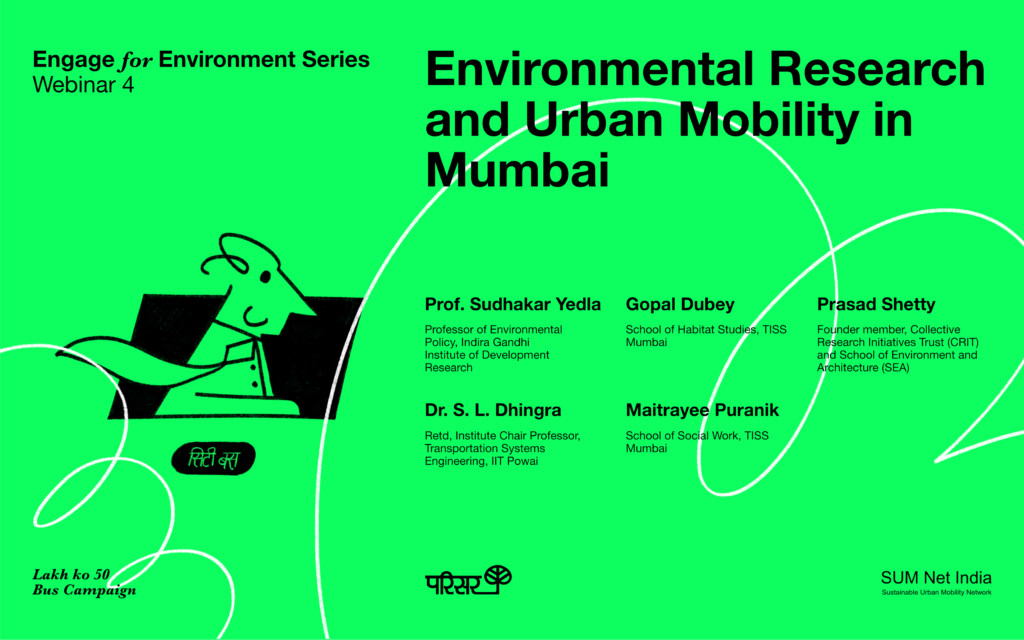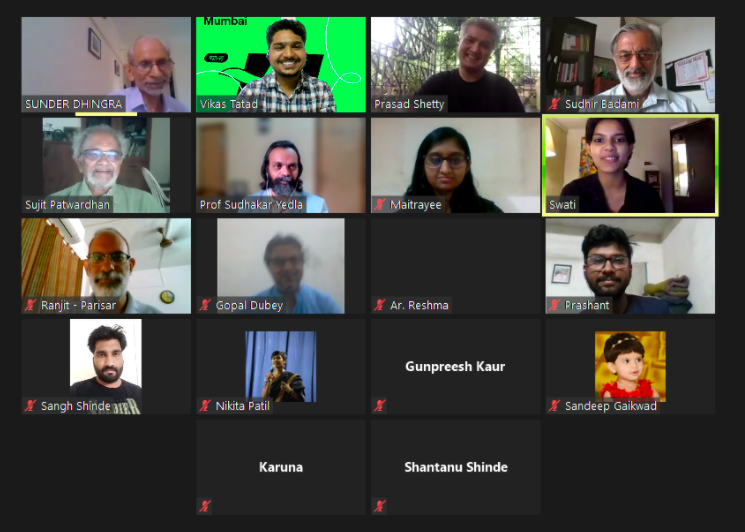Ensuring better environment is not a charity but a necessity for the city
Experts and scholars, speaking about the transport needs of the emerging and changing city of Mumbai, said that Maharashtra needs a state level urbanization plan which balances mobility demands with nature conservation informed by research ecology and democratised decision-making processes.
Urban experts, scholars, researchers and academicians from Mumbai came together and stressed the importance of better public transport for a rapidly changing Mumbai and continuously deteriorating environment. Especially in the current scenario where urban transport is invariably linked with some of the most expensive infrastructure projects in the cities which necessitates striking an ecological balance.
In a web discussion organised by Parisar as part of its multi-city webinar series titled ‘Engage for Environment: Environmental Research and Urban Mobility’, technical experts like Sunderlall Dhingra, Retd. Professor from IIT Bombay and Prof. Sudhakar Yedlar from IGIDR underscored the importance of multidisciplinary and contextual research for ecologically sustainable transport projects. Gopal Dubey from the Centre of Urban Policy and Governance at TISS also added that democratizing decision-making and implementing processes through public participation should be encouraged by the government.

Urbanist Prasad Shetty spoke about the role of a research ecology in understanding cities and recommending solutions. He highlighted a major governance loophole in the form of statutory plans for cities not requiring prediction and showcase of the transport infrastructure needs. Resultantly, urban transport solutions often become knee-jerk reactions to long-term problems which have no execution implication. “We have national level policies and city-level schemes or missions but not a state-level urbanization policy which integrates transport and environment. The population growth of Mumbai is lesser than the national average but due to change in the nature of economy and work, the number of trips have increased and movement has intensified from one-directional to multi-directional. The average age of the city is increasing which means in a few decades Mumbai will have a large elderly population. A state level urbanization policy could effectively chart the infrastructure needs of an emerging city like this,” he added.
Furthermore, speaking about community engagement, young research scholar Maitrayee who researched the Aarey case from various disciplinary perspectives said, “the suitability of metro rail both as a transport solution and as an infrastructure project needs to be carefully assessed to maintain ecological balance in development works.” She acknowledged that the state government’s decision to move the metro car shed outside Aarey forest and to declare it as a reserved forest was a step in the right direction.

Prof Sudhakar concluded by stating that the metro is going to negatively impact the buses as people from BEST are likely to move to Metro while the real shift needs to happen from two-wheelers and car users to bus users. All the speakers reiterated that buses should be meeting the majority share of travel demands and therefore must be upgraded accordingly. Environment does not follow the urban-rural divide and therefore all the different branches of urban studies need to come together for inclusive and sustainable transport solutions.
The webinar was conducted as part of a statewide campaign—Lakh ko 50—which highlights the necessity for at least 50 buses per lakh urban cities (a benchmark set by the Ministry of Housing and Urban Affairs) for all cities of Maharashtra. It has been launched by the Sustainable Urban Mobility Network (SUM Net), a coalition of individuals, voluntary organizations, and civil society networks and movements promoting sustainable urban transport solutions across India. The webinar was live streamed on Facebook and reported in media.